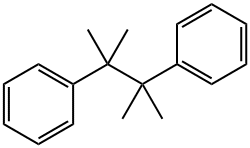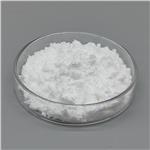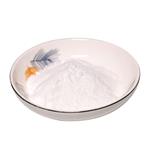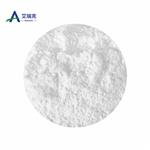Description
2,3-Dimethyl-2,3-diphenylbutane is one of the decomposition of Dicumylperoxide (DCP). Diallyl orthophthalate (DAOP) is a reactive plasticizer initiated by 2,3-dimethyl-2,3-diphenylbutane for improving polyphenylene oxide (PPO) processing.
Chemical Properties
white to light yellow flakes, crystalline powder
Uses
2,3-Dimethyl-2,3-diphenylbutane (DMDPB) is a new type of polymer material additive. It could used as a flame retardant synergist for polymer materials. This material can reduce the amount of flame retardant, reduce the effect of flame retardant on polymer performance, and endow polymer materials with flame retardant properties. It can also be used as a catalyst or initiator for polymer crosslinking, grafting, and copolymerization, and can be used for the modification of various polymer materials. For example, the thermolysis of 2,3-dimethyl-2,3-diphenylbutane at temperatures ranging from 220 to 310 °C is used to initiate the radical-mediated graft addition of vinyltriethoxysilane (VTEOS) to polyethylene[1].
Uses
2,3-Dimethyl-2,3-diphenylbutane, also known as Dicumene or 1,1 -(1,1,2,2-tetramethylethylene)dibenzene, is an environment friendly replacement for Antimony Tri-oxide (Sb2O3) and is commonly used as a flame retardant (FR) synergist for polypropylene and polystyrene, especially in expandable polystyrene (EPS).
Reactivity Profile
Adding appropriate modifiers dicumen can improve the performance of the polymer. In the case of heat or light, the product is easy to divide and form a certain free radical. The free radical is more stable due to the resonance of the benzene ring and the hyper-shock effect of methyl. In fact, the modification of Dicumene in the polymer is achieved through the free radical. It is found that when the temperature increases, the half-life of dicumen becomes shorter. The temperature of its decomposition is high. And at 230 degrees, the half-life will reach thirty minutes.
Flammability and Explosibility
Non flammable
References
[1] Parent J, et al. Mechanism and selectivity of 2,3-dimethyl-2,3-diphenylbutane mediated addition of vinyltriethoxysilane to polyethylene. European Polymer Journal, 2006; 42: 971-980.




